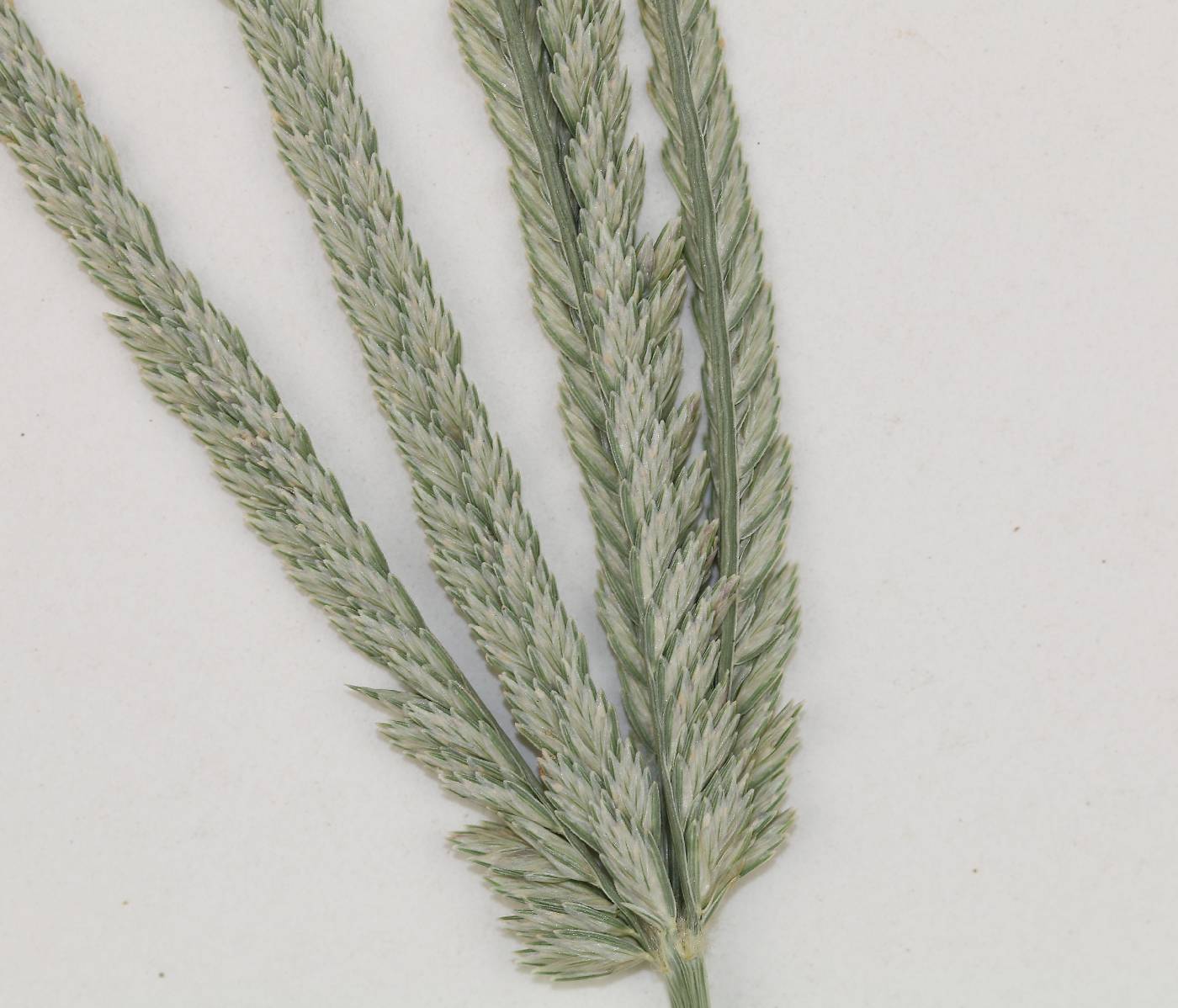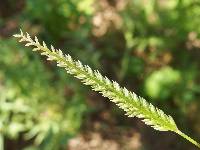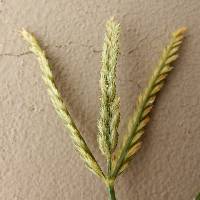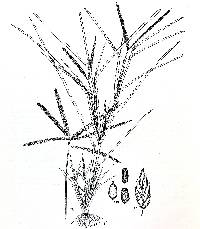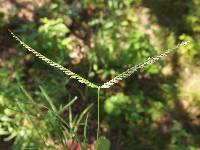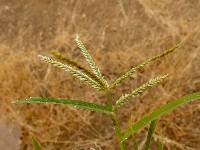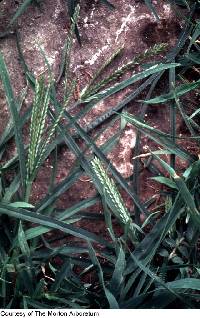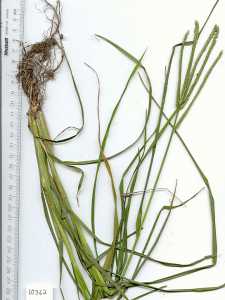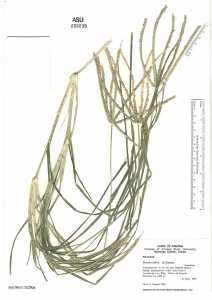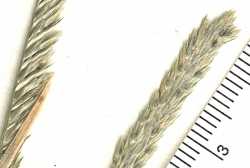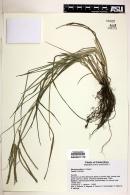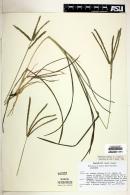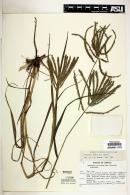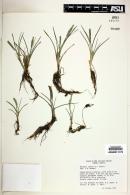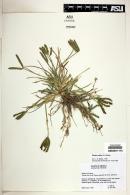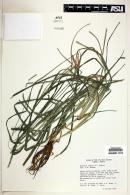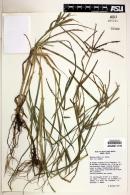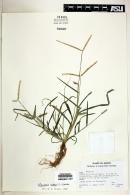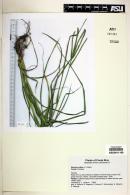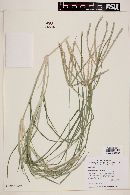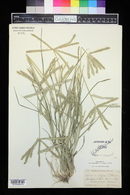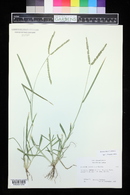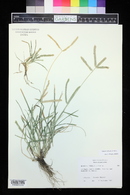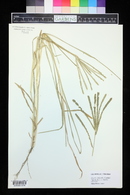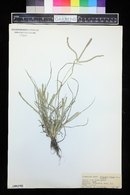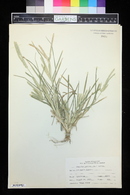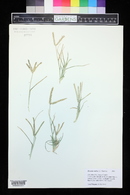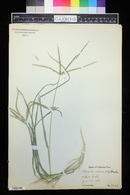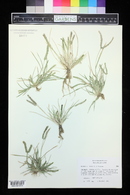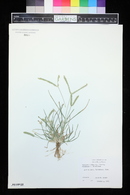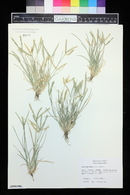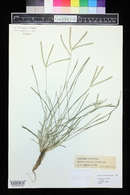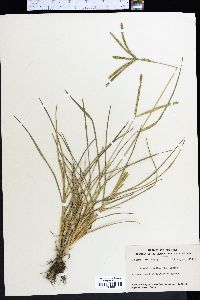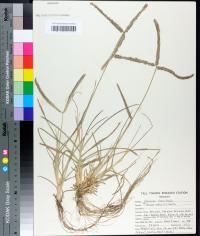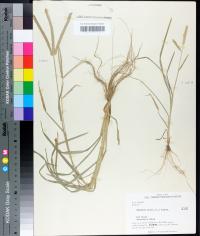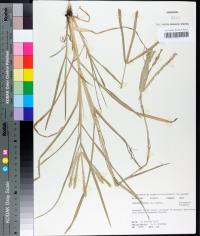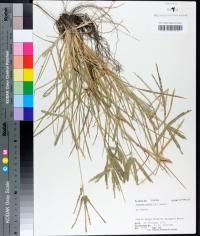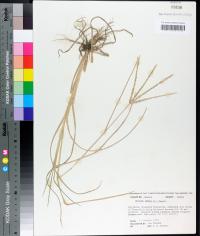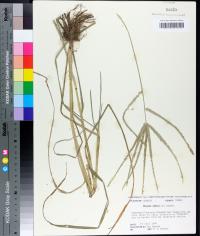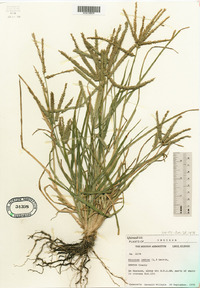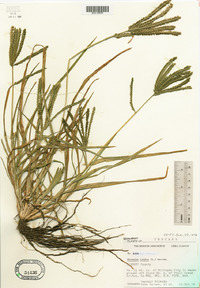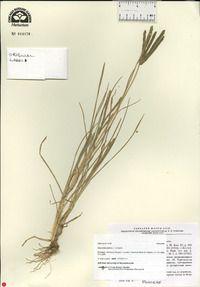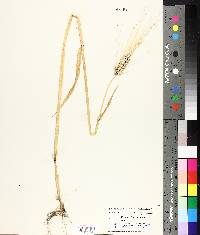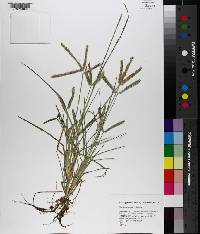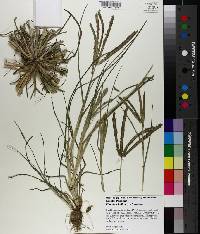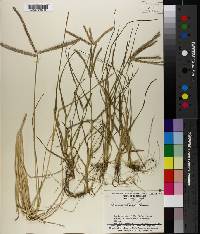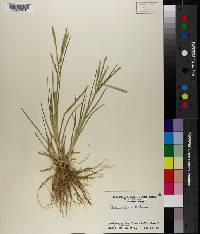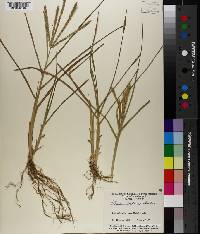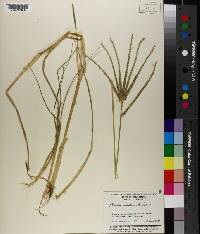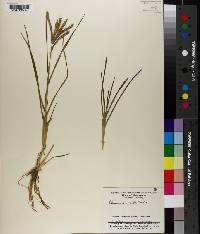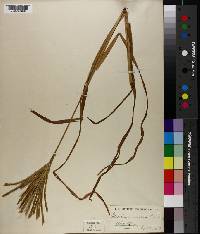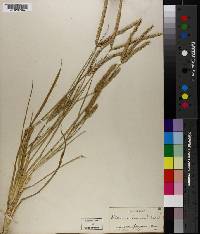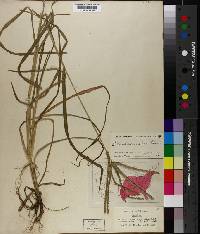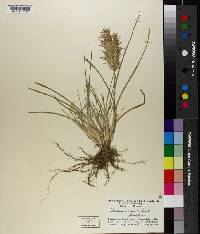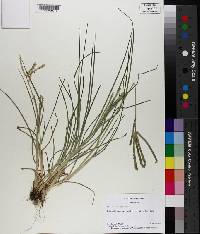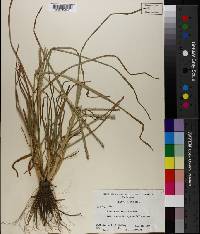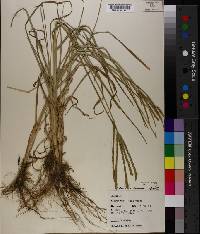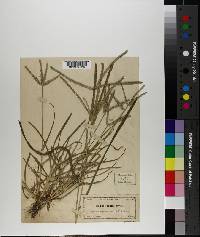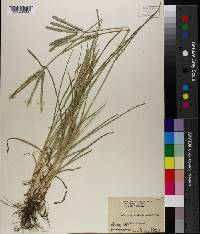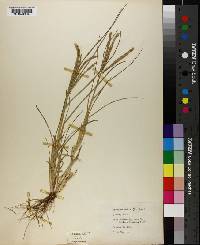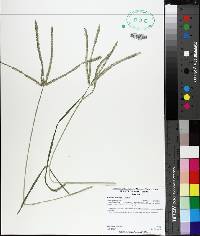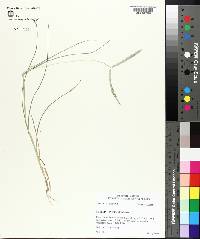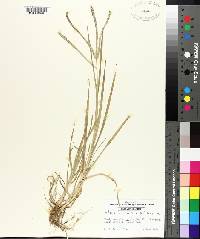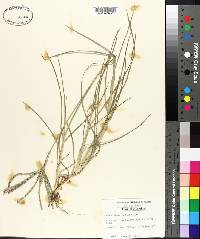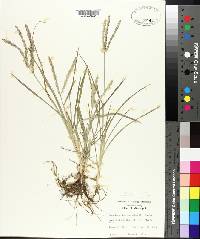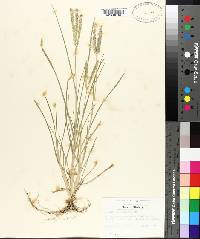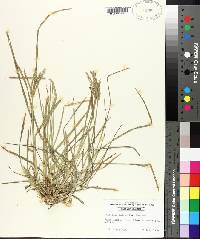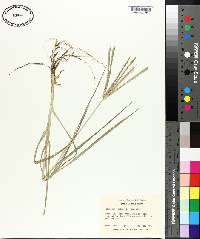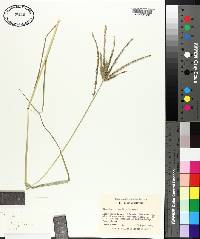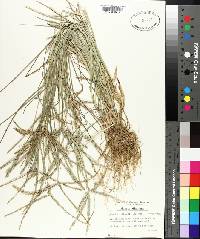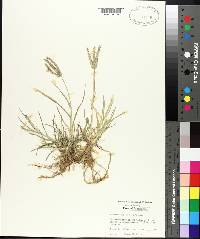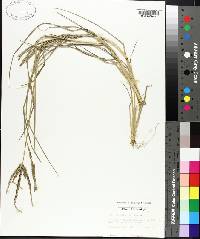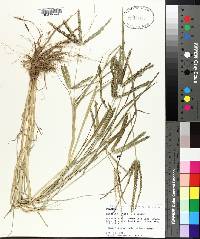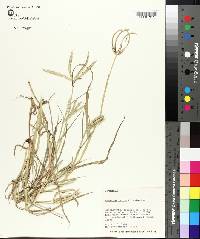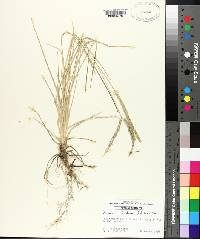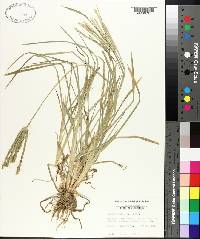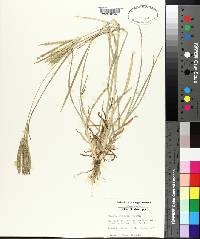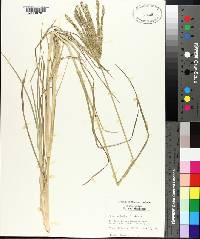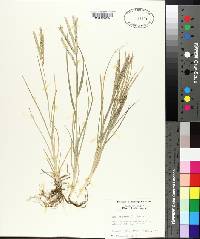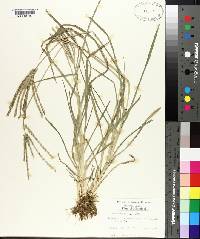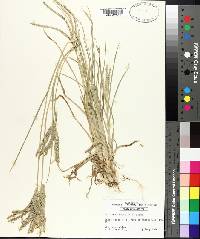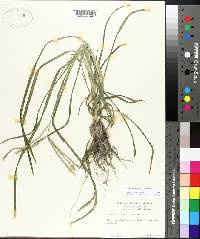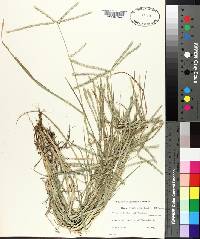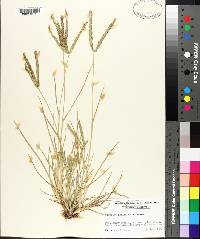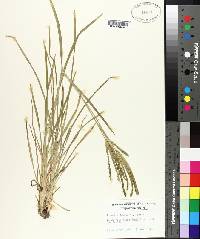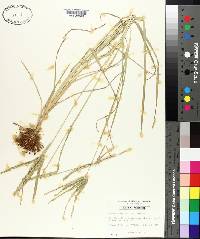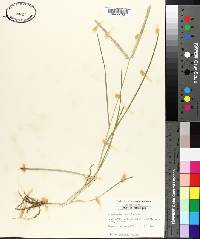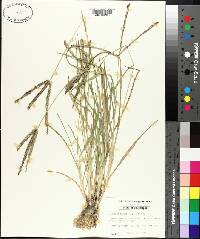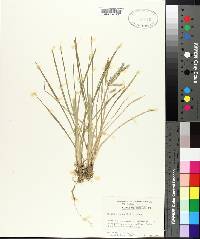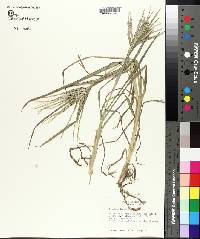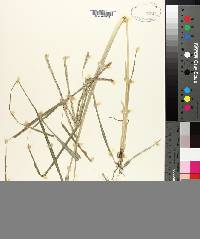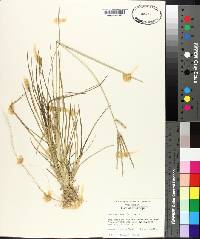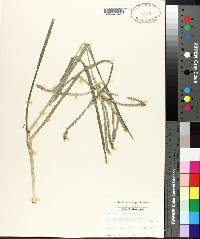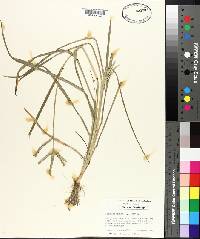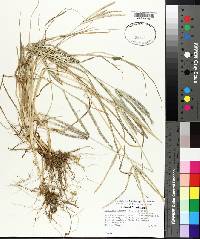
|
|
|
|
Family: Poaceae
Indian Goose Grass, more...yard grass, crowsfoot grass, goose grass, goosegrass, Indian goosegrass, manienie ali'I, silver crabgrass, wiregrass, Eleusine d'Inde (es: zacate guacima)
[Cynodon indicus (L.) Raspail, moreCynosurus indicus L., Eleusine distachya Nees, Eleusine distans Moench, Eleusine glabra Schumach., Eleusine gonantha Schrank, Eleusine gouini E. Fourn., Eleusine inaequalis E. Fourn., Eleusine indica var. major E. Fourn., Eleusine indica var. sandaensis Vanderyst, Eleusine rigidifolia E. Fourn., Eleusine scabra , Eleusine textilis Welw.] |
Plants annual. Culms 30-90 cm, erect or ascending, somewhat compressed; lower internodes 1.5-2 mm thick. Sheaths conspicuously keeled, margins often with long, papillose-based hairs, particularly near the throat; ligules 0.2-1 mm, truncate, erose; blades 15-40 cm long, 3-7 mm wide, with prominent, white midveins, margins and/or adaxial surfaces often with basal papillose-based hairs. Panicles with 4-10(17) branches, often with 1 branch attached as much as 3 cm below the terminal cluster; branches (3.5)7-16 cm long, 3-5.5 mm wide, linear. Spikelets 4-7 mm long, 2-3 mm wide, with 5-7 florets, obliquely attached to the branch axes. Lower glumes 1.1-2.3 mm, 1-veined; upper glumes 2-2.9 mm; lemmas 2.4-4 mm; paleas with narrowly winged keels. Seeds ovoid, rugulose and obliquely striate, usually not exposed at maturity. 2n = 18. Eleusine indica is a common weed in the warmer regions of the world. In the Flora region, it usually grows in disturbed areas and lawns, and has been found in most states of the contiguous United States. Annual tufted herb 30 cm - 1.06 m tall Leaves: with open, longitudinally ridged sheaths that often have long warty-based hairs along the margins. The membranous ligules are 0.2 - 1 mm long, flat-tipped, unevenly cut, and have hairs along the margins. Blades 15 - 40 cm long, 3 - 7 mm wide, with warty-based hairs on the margins (sometimes also on the upper surface) and white midveins. Inflorescence: branched (panicle), with four to seventeen branches in a terminal whorl that reaches above the upper leaves. One branch is usually attached up to 3 cm beneath the terminal whorl, and each branch is 3.5 - 16 cm long, 3 - 5.5 mm wide, and linear. Fruit: a modified caryopsis with a thin pericarp that separates from the seed early. The egg-shaped seeds are minutely wrinkled and have slanting longitudinal grooves. Culm: 30 cm - 0.9 m long, erect to ascending, branched, slightly compressed, hairless, with lower internodes 1.5 - 2 mm across. Spikelets: 4 - 7 mm long, 2 - 3 mm wide, laterally compressed. Glumes: unequal, with a 1.1 - 2.3 mm long, single-veined lower glume and a 2 - 2.9 mm long upper glume. Florets: five to seven per spikelet. Lemma: 2.4 - 4 mm long, hairless, three-veined, longitudinally ridged, with a tip that is neither toothed nor awned. Palea: with a narrow-winged longitudinal ridge, three anthers 0.5 - 1 mm long, and hairless ovaries. Similar species: No information at this time. Flowering: late June to early October Habitat and ecology: Introduced from Europe and Asia, this species has become a weed in compacted soil. It is especially common in urban areas, growing on highway shoulders, parking lots, and trampled turf, and is occasional on floodplains and shores. Occurence in the Chicago region: non-native Etymology: Eleusine is named after Eleusis, the town where the goddess of harvests was worhipped. Indica means "from India." Author: The Morton Arboretum Culms 3-6 dm, branched from the base, spreading or ascending; sheaths papillose-ciliate distally; blades usually smooth; spikes usually 3-8, 4-10 cm נ5 mm, spreading or ascending; spikelets crowded, 3-6-fld; second glume 2-3 mm; lemmas 2.5-4 mm; 2n=18, 36. A common weed in lawns, gardens, and waste places; native of the Old World, now pantropical, extending n. to Mass., S.D., and Utah. Gleason, Henry A. & Cronquist, Arthur J. 1991. Manual of vascular plants of northeastern United States and adjacent Canada. lxxv + 910 pp. ©The New York Botanical Garden. All rights reserved. Used by permission. From Flora of Indiana (1940) by Charles C. Deam This species is doubtless found in every county of the state although our records are less frequent in the northern counties. It prefers a moist, sandy habitat and is found about dwellings, along roadsides and footpaths and in waste places, pastures, and cultivated fields. ...... Indiana Coefficient of Conservatism: C = null, non-native Wetland Indicator Status: FACU |
|
|
|

